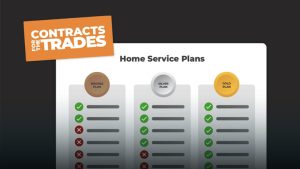How to Adapt your Workforce Management to the New Normal
June 26, 2020 | Read: 9 minutes

There is little doubt that we’re living through an interesting time. Being a business leader used to be challenging enough, but it’s especially difficult now, as you strive to adapt to the new normal workforce management style.
This being said, it’s important to take a step back from the general mood and look at things through the eyes of a forward-thinking innovator.
Some of our most important achievements, as a society, came out in a climate of crisis (fun-fact: the microwave was invented during WWII, when a radio technician named Percy Spencer noticed the chocolate in his pocket kept melting when he was near an active radio set).
We’re not saying it’s time for you to reinvent the wheel as a way to make the most out of the new normal, but take Spencer’s attitude towards his discovery: he adapted. The world wasn’t exactly in the best of situations, but his spirit wasn’t deterred by this fact. Instead, he listened to his hunch, embraced change, and ended up creating a whole industry that would continue to help people later down the line, to this very day!

It’s time to adapt…
The keyword here is adaptability.
In order to make the most out of the situation and stay feasible as a business, as an employer, and continue to help your customers, as well as create jobs in your industry, be it plumbing, heating, HVAC, or any other you need to be adaptable.
In order to do this successfully and manage people now and into the future, you have to treat every obstacle like an opportunity. Think about the companies that flourished by being adaptable and forward-thinking, after seeing big changes in the market.
Many of them didn’t reinvent the wheel, they simply made the wheel easier to handle and, key to their strategy, more enjoyable. Uber, Amazon, Google; they don’t do anything new, but they made strides to adapt and do them better than most.
Good business leaders see change as a good thing, a chance to identify the weak spots in their business plan and come up with better processes that can handle whatever the market throws at it. When change occurs in the world, it’s the forward-thinking, adaptable businesses that flourish and come out even stronger, ready for whatever is ahead of them.
For example, when the dot-com bubble burst in the 2000s and everyone expected online businesses to fail, Amazon’s value may have gone down by 90%, , but because of their flexibility, not only did they survive, but they’re now one of the most valuable companies in the world. It’s attitudes like these that help companies thrive, no matter the circumstances.
So, what are some measures you can take to better manage your workforce in the new normal? Let’s start with:
1. Managers have to be interested in employees’ attitudes
First and foremost, a business is defined by its people. Not by inventory items or office location, but by the attitude and presence of each employee and how these are passed on into the customer experience they offer. It’s important to train technicians to provide excellent customer service, by accommodating the customers’ needs through the various tools they have at their disposal.
At the same time, it’s important for a manager to stay in touch with their employees, especially during times of change. Simply because there are fewer face-to-face opportunities to interact means you will have to make more of an effort to converse with employees, even if it’s simply to chat about their day and how they’re handling the new normal.
For example, an operations manager might have been motivated by the need to work from home to look for better tools to manage operations like adding an intelligent scheduling feature to their work order management software or looking into automated (and, therefore, touchfree) inventory management.
If you’re the business owner, it can be difficult to put yourself in the shoes of each and every employee, but if you invest your time in listening to their recommendations, it can have a massive impact and help you to make their lives easier. In the end, the number 1 reason a manager should pay attention to their employees’ attitude is simple: happy people are more productive.
2. Obstacles happen, watch how your workforce reacts
As we’ve mentioned before, obstacles and setbacks happen. Your business might not have been the most ready to tackle the new normal. Whether that’s because you were still using mostly paper notebooks and hand-filled work order sheets to manage day-to-day operations, or because you lost touch with customers once the word-of-mouth advertising you relied on petered off. For better or worse, that’s all in the past now.
It’s time to look to the future and only dwell on the obstacles long enough to figure out how to overcome them.
It’s not a great idea to let stress get the best of you and react negatively when people make mistakes. It’s normal, for example, when you implement a new tool to have employees that require more training. That doesn’t mean they’re being difficult but that they want to be more efficient when using said tool rather than pretend they know and waste its benefits.
This means paying attention to how your employees tackle obstacles. Some might throw up their hands in defeat and refuse to get back up. Those are the employees you’ll want to support with measures that are within your control like more virtual interactions to make them feel part of the team or better tools for working remotely.
On the other hand, keep an eye out for those who welcome change and challenges. They will be the drivers behind your business’s innovation spirit and you’ll know in the future that you can rely on them whenever you introduce a new way of working, like, for example, going above and beyond to deliver an excellent customer experience.
Some techs might see this as their actual work taking a backseat to chit-chat and pointless loyalty schemes, but the truly great on will understand that a remarkable customer experience is what makes their work stand out from the competition.
3. Is the new normal a permanent thing?
As a leader, it’s your role to adapt the business to the requirements of the new normal, but it’s understandable if you’re wondering whether the changes that are happening in general will become permanent fixtures. However, this shouldn’t lead to indecision and a freeze in business decisions. On the contrary, it should promote even more flexibility and agility in the way you approach work processes.
Therefore, the question isn’t about whether the new normal is a permanent thing but what can you do to succeed regardless of the answer to that question.
4. Characteristics of the new normal
We’ve put together a list of things that you can expect to become, if not standard, at least very common and a solution that you can consider in order to make your business future-proof:
- The office can be anywhere. Cloud management software means you can manage your business from anywhere, using nothing more than a laptop and an internet connection.
- Schedule changes won’t come with a 2-week notice. Instead, as people get accustomed to the situation, you’ll see more customers requesting appointment changes with zero notice therefore a dynamic scheduling tool will be essential to ensure that your admin team doesn’t become overwhelmed and start making errors.
- Touchfree technologies. We’ve been getting used to less and less physical contact for a while but this trend will be accelerated now. The ability to accept contactless payments on the spot and digital signatures will become a requirement rather than an option.
- Digital inventory information. You’ve probably noticed how much time you’re saving but not having technicians driving back and forth from the warehouse so it’s only a small step from that to digital inventory control, where your data is updated in real-time, without needing anyone to physically fill in check-in sheets or interact with a warehouse manager.
- Stress-proof procedures. We’re not talking about psychological stress but about applying a stress factor to your procedures. If your admin teams are used to doing things on the fly, the new normal will require a different approach. Having a strong standard for every process, that can’t be disturbed if an employee is unwell or if you’ve just hired a new person, will keep your business thriving regardless of market circumstances.
- Essential recurring income. Setting up service reminders will become an essential source of income, as customers will be more apprehensive about switching to a different provider and acquiring new customers could be more challenging. This means keeping every recurring customer close and automatic service reminders will do that for you.
- Customer experience. Keeping in touch will be more important than ever so that customers don’t forget about you. From service reminders to regular newsletters, nurturing the trust you have built with customers will be vital when it comes to them letting you in their home or property again. After all, tradesmen will always be in demand – one can’t go without hot water or live with a smoking fuse box – but you want your tradesmen to be in demand.
The takeaway on new normal workforce management
All in all, the new normal will soon become…well…normal, much like every challenging situation before it.
If you’re ready to go digital and reap the benefits of the changes we’ve outlined above, take a look at Commusoft.
If not, give yourself the best chance to adapt comfortably, with our guide to working remotely:

Cristina Maria
I'm here to bring you next-level strategies to the field service industry. When I'm not working on the best tips to grow your business, I'm on the lookout for sci-fi novels and cookie recipes.











